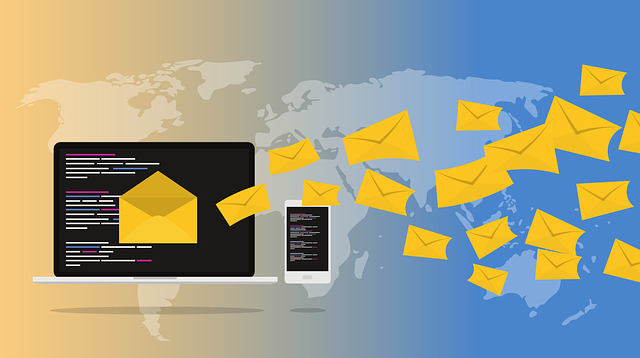In today’s hyper-connected world, LinkedIn isn’t just a platform for job seekers or recruiters; it’s a bustling marketplace of ideas, services, and opportunities waiting to be tapped into. Imagine turning that casual connection into a loyal client with just a well-crafted cold email.
While it may sound daunting, with the right approach, you can seamlessly navigate the nuances of cold emailing on LinkedIn and transform your network into a pipeline of potential clients.
In this guide, we’ll explore practical strategies to help you master cold email marketing on LinkedIn, fostering genuine connections that lead to meaningful business relationships.
Why Choose LinkedIn for Cold Email Marketing?
With over 900 million users, LinkedIn is the largest professional networking platform globally. Unlike other social media sites, it’s designed for professional interaction, making it the perfect environment for B2B marketing and outreach. Here, you can connect directly with decision-makers, influencers, and potential partners who are eager to discuss innovative ideas and solutions.
In a world saturated with generic emails, personalization is your secret weapon. A tailored message stands out in crowded inboxes, capturing attention and driving engagement. LinkedIn provides a treasure trove of information—job titles, industry insights, recent posts—enabling you to craft messages that resonate deeply with your audience.
When it comes to cold emailing, LinkedIn offers a unique blend of professional networking and targeted outreach that sets it apart from other platforms. Here’s why LinkedIn should be your go-to choice for cold email marketing:
1. Direct Access to Decision-Makers
LinkedIn is a treasure trove of professionals, including key decision-makers across diverse industries. This direct access means you can connect with individuals who hold the power to make purchasing decisions. By reaching out to the right people, you’re not just casting a wide net; you’re targeting those who are genuinely interested in what you have to offer.
2. A Context for Professional Interaction
Cold emailing on LinkedIn feels less intrusive than traditional methods. Since the platform is designed for networking and professional growth, your outreach comes across in a context where recipients expect to engage with new connections. This professional setting helps your message land more effectively, making it easier for prospects to see the value in your outreach.
3. Abundant Personalization Opportunities
LinkedIn provides a wealth of data about its users, including job titles, interests, and recent activities. This rich information allows you to personalize your messages in a way that resonates. By referencing a prospect’s recent project or shared connections, you can craft messages that feel tailor-made, significantly boosting your chances of receiving a response.
4. Build Rapport Before Reaching Out
Before sending that cold email, you can engage with your prospects through likes, comments, and shares on their posts. This preliminary interaction helps you establish rapport and lays a foundation of familiarity. When you finally reach out via email, your name is more likely to ring a bell, making it easier for recipients to view you as a credible contact rather than just another cold emailer.
5. Higher Engagement Rates
Messages sent through LinkedIn often see better open and response rates compared to traditional cold emails. Recipients are accustomed to engaging with professional content on the platform, which means your outreach has a greater chance of capturing their attention. Plus, the professional context reduces the likelihood of your message getting lost in a cluttered inbox or flagged as spam.
6. Opportunities for Meaningful Follow-Up
LinkedIn allows for ongoing engagement after your initial outreach. If you don’t receive a response, you can follow up through direct messages or by continuing to engage with their content. This multi-faceted approach keeps you top-of-mind and demonstrates your commitment to building a genuine relationship, rather than simply pushing for a sale.
7. Establish Your Thought Leadership
By sharing valuable insights and content on LinkedIn, you can position yourself as a thought leader in your industry. When you reach out to prospects, they’re more likely to view you as a knowledgeable resource, not just another salesperson. This credibility can pave the way for meaningful conversations and collaborative opportunities.
In essence, LinkedIn is not just a social network; it’s a powerful platform for effective cold emailing. Its focus on authenticity, accessibility, and engagement makes it an invaluable tool for marketers and sales professionals looking to build lasting connections. Whether you’re initiating a conversation or nurturing existing relationships, LinkedIn offers the ideal environment for impactful blogger outreach.
How to Get Started with Cold Email Marketing on LinkedIn
Identify Your Target Audience
Before you hit send, it’s crucial to pinpoint your ideal client. Ask yourself:
- Industry: Which industries are most aligned with your product or service?
- Role: Are you targeting C-suite executives, managers, or a specific department?
- Company Size: Are you focusing on startups, small businesses, or established enterprises?
Once you have a clear vision, use LinkedIn’s advanced search features to find and connect with relevant individuals.
Optimize Your LinkedIn Profile
Does Your Profile Reflect Your Brand?
Before reaching out, ensure your LinkedIn profile conveys professionalism and credibility. Here’s how to enhance your presence:
- Professional Headshot: Choose a high-quality image that reflects your personality and professionalism.
- Compelling Headline: Your headline should encapsulate your expertise and the value you offer.
- Engaging Summary: Tell your story! Highlight your skills, accomplishments, and what makes you unique.
- Recommendations: Gather testimonials from colleagues and clients to bolster your credibility.
A polished profile not only attracts potential clients but also encourages them to engage with you.
Crafting the Perfect Cold Email

What Makes a Cold Email Stand Out?
The Anatomy of a Compelling Email
Crafting an impactful cold email is essential. Here’s a structure that works:
- Subject Line: Keep it short, relevant, and intriguing. Avoid clickbait; clarity is key.
- Example: “Quick Question About [Recipient’s Company]”
- Personalized Greeting: Always address the recipient by name.
- Engaging Opening: Start with a hook—mention a mutual connection, a relevant industry trend, or a compliment about their work.
- Value Proposition: Clearly articulate how you can solve a problem or add value to their business.
- Call to Action: End with a clear, low-pressure request, like suggesting a brief chat or offering to send more information.
- Signature: Include your full name, title, and links to your LinkedIn profile or website for credibility.
How to Personalize Your Cold Emails
Tips for Tailoring Your Messages
Personalization extends beyond just using names. Here’s how to truly connect:
- Research Their Profile: Mention a recent post, achievement, or shared interest.
- Common Connections: If you have mutual connections, reference them to build trust.
- Tailored Solutions: Customize your value proposition to address specific challenges they might be facing.
Example of a Cold Email Template
Ready-to-Use Template
Feel free to customize this template to suit your outreach:
Subject: Quick Question About [Recipient’s Company]
Hi [Recipient’s Name],
I hope you’re doing well! I came across your profile while researching leaders in [industry/field] and was really impressed by your work on [specific project or achievement].
At [Your Company], we specialize in [briefly explain your service or product]. I believe we could collaborate effectively to address [specific challenge] that many in [their industry] face.
Would you be open to a brief chat next week? I’d love to share some insights that could benefit [Recipient’s Company].
Best,
[Your Name]
[Your Title]
[Your LinkedIn Profile]
[Your Company Website]
Following Up on Cold Emails
Why Follow-Ups Matter
The Importance of Persistence
Often, a single email won’t cut it. Statistics show that follow-ups can significantly boost response rates. Don’t shy away from reaching out again; it can be the difference between a missed opportunity and a fruitful conversation.
How to Craft Effective Follow-Up Emails
Tips for Your Follow-Up Strategy
- Timing: Wait about 3-5 days after your initial email before following up.
- Be Concise: Keep your follow-up brief, and reference your previous email to jog their memory.
- Add Value: Consider sharing additional insights or resources that might interest them.
Example Follow-Up Email
Quick Follow-Up Template
Subject: Following Up on My Last Email
Hi [Recipient’s Name],
I wanted to follow up on my previous email about [specific topic]. I completely understand how busy things can get, but I genuinely believe our [service/product] could help [mention specific benefit].
If you’re available for a quick chat, I’d love to discuss how we can support [Recipient’s Company].
Looking forward to hearing from you!
Best,
[Your Name]
[Your Title]
[Your LinkedIn Profile]
[Your Company Website]
Measuring Success: Analyzing Your Outreach Efforts
What Metrics Should You Track?
Key Performance Indicators (KPIs)
To gauge the effectiveness of your cold email campaigns, monitor these key metrics:
- Open Rate: The percentage of recipients who opened your email. This reflects the effectiveness of your cold email subject line.
- Response Rate: The percentage of recipients who replied. A high response rate indicates your message resonated.
- Conversion Rate: The percentage of responses that lead to meetings or sales, showcasing the effectiveness of your pitch.
Tools for Tracking Performance
Utilizing Analytics Tools
Several tools can assist in tracking these metrics:
- Email Tracking Software: Tools like Mailtrack or Yesware help monitor open and response rates.
- CRM Systems: Use CRM platforms like HubSpot or Salesforce to analyze conversion rates and overall engagement.
- Linkedin Analytics Tools: Use powerful LinkedIn analytics tools to track performance, engagement, and insights on GetPhyllo.
Best Practices for Cold Emailing on LinkedIn
When it comes to cold emailing on LinkedIn, the goal is to build genuine connections that can lead to fruitful professional relationships. To help you stand out in the inbox, here are some best practices that can enhance your outreach strategy and ensure you’re making the most of your LinkedIn efforts.
1. Stay Compliant with LinkedIn’s Messaging Policies
Navigating LinkedIn’s messaging landscape requires a clear understanding of the platform’s guidelines. Familiarizing yourself with these policies not only protects your account from being flagged as spam but also helps you craft messages that resonate with your audience. Be mindful of how often you send messages and avoid repetitive outreach. This consideration shows respect for your prospects and increases your chances of receiving a positive response.
2. Engage with Content Before Reaching Out
Before hitting send on your cold email, take the time to engage with your prospects’ content. Like, comment, or share their posts to build rapport and demonstrate your genuine interest in their work. This not only helps you stand out but also gives you a context for your outreach. For instance, you might mention a recent post of theirs in your email, which can serve as a great icebreaker and show that you’re not just another faceless salesperson.
3. Be Authentic in Your Communication
In a sea of generic sales pitches, authenticity shines through. Prospects can quickly spot a canned message, so it’s essential to communicate in a genuine voice. Focus on building a real connection by asking thoughtful questions or sharing insights that are relevant to their interests. Avoid overly salesy language; instead, present your value in a way that feels conversational and personable. Remember, the goal is to foster trust, not just make a sale.
4. Test and Optimize Your Approach
Cold emailing is both an art and a science. Don’t be afraid to experiment with different email formats, subject lines, and messaging styles to discover what resonates most with your audience. Monitor your metrics—such as open rates and response rates—to identify trends. Use this data to refine your approach continually. Testing various strategies will not only help you improve your outreach but also enable you to adapt to the preferences of your audience over time.
5. Craft a Strong Value Proposition
Your prospects are busy, and their time is valuable. Ensure that your emails quickly convey the unique value you bring to the table. Clearly outline how your product or service can solve a specific pain point they might be facing. Avoid jargon and keep it straightforward; a concise, compelling value proposition can pique their interest and prompt them to engage with you further.
6. Follow Up Thoughtfully
Don’t underestimate the power of a thoughtful follow-up. If you don’t hear back after your initial email, a gentle reminder can keep the conversation alive. However, it’s important to strike the right balance—be persistent but not pushy. In your follow-up, you might reference your previous email and add something new, such as a relevant article or an industry insight, to provide additional value. This approach shows that you’re genuinely interested in starting a dialogue rather than just pushing for a sale.
Conclusion
Cold emailing on LinkedIn may initially seem intimidating, but with a thoughtful approach, you can effectively turn connections into clients. By optimizing your profile, personalizing your outreach, and following up diligently, you’ll enhance your conversion optimization chances while fostering meaningful professional relationships.
Remember, the key lies in providing value and establishing trust. As you refine your strategy, you’ll discover that cold email marketing on LinkedIn is not just about numbers; it’s about building connections that can lead to long-term partnerships. Start your journey today, and watch as your network transforms into a robust pipeline of opportunities!

